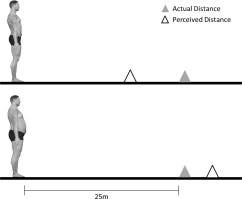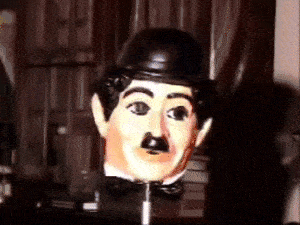Our perception does not always reflect reality, as evidenced by numerous studies. The information sent by the eyes to the brain is processed and contains many short-cuts and assumptions which makes things more optimized, but also leads to biases. One study, for instance, found that people who are overweight will judge an object as being farther than it really is. This suggests that physical characteristics — people who thought they were overweight, but weren’t in fact, did not share this bias — plays a major role in defining perception.

Sixth-six normal, overweight and obese Walmart shoppers were recruited for the study. They were asked to estimate distances, inclines but also play tennis, golf and virtual tennis.

Everyone seemed to judge distances poorly. What was interesting is how the bias was dependent on body weight. While people of normal weight judged distances as being shorter than they really were, overweight individuals perceived objects as being farther than they really were. On average, obese people see distances at least 10% farther than those with an average weight. As for inclines, people of all heights and weight “grossly overestimate” how steep hills are.

The findings suggest that overweight people “may choose to perform less physically demanding actions not as a result of how they perceive their bodies, but as a result of how they perceive the environment,” the researchers write in the journal Acta Phycologica. This seems to create a vicious cycle of perception and behaviour.
The other experiments further exemplified how perception affects our ability to act. When the researchers used a Ebbinghaus illusion to make a golf course hole seem smaller, participants performed worse and, conversely, when the illusion made the hole seem bigger performed better. A virtual tennis ball was perceived to travel faster when participants held a larger racket, and slower when using a smaller racket, the Colorado State University Fort Collins researchers found.

It would be interesting to find the root of this kind of behaviour. Seem biases are good and clearly seem to have an evolutionary advantage. Trekking through the woods, people often mistake twigs for snakes because it’s better to be wrong than take the risk. Similarly, cars seem to travel faster than they really do because it gives you ‘more time’ to think and act.






